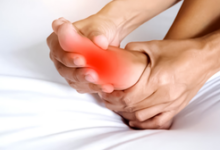-
NATIONAL

NIA Arrests Principal Defendant in Praveen Nettaru Murder Case in…
According to an official announcement, the National Investigation Agency (NIA) on Friday apprehended a major…
Read More » -

-

-

-

-
UP STATE

‘Manchester of East’ Kanpur Voters Seek Return of Lost Glory…
The people of Kanpur are hoping to pick a “true leader” who will restore the…
Read More » -

-

-

-
BIHAR

Why is the NDA keeping quiet on the demand that…
Patna: On Wednesday, CPI-ML general secretary Dipankar Bhattacharya requested that the language be designated as…
Read More » -

-

-

-
ENTERTAINMENT

During the ‘Pyar Ka Pehla Adhyaya: Shiv Shakti’ act, Arjun…
Mumbai, 10 May In a video he posted, actor Arjun Bijlani demonstrated his vocal abilities…
Read More » -
ENTERTAINMENT

At the 77th Cannes Film Festival, Ayush Mehra will make…
Representing the thriving actors’ community of India, Ayush Mehra, the dynamic actor known for his…
Read More » -
ENTERTAINMENT

Bhuvan Bam Considers His Delhi Roots and Takes Inspiration from…
Actor and well-known content producer from India Bhuvan Bam pays homage to Shahrukh Khan, whom…
Read More »
-
INTERNATIONAL

The youngest son of Donald Trump has withdrawn from his…
Washington, DC [US], May 11: According to CNN, which cited a senior Trump campaign official…
Read More » -

-

-

-

-
HEALTH

Only three nights worked might increase your chances of obesity…
May 10, New Delhi According to research, working three nights a week may be sufficient…
Read More » -

-

-

-
LIFESTYLE

May 11, 2024 Tarot Card Predictions: Tarot Card Readings for…
Eight of Cups, or Aries: Your prior experiences have caused you a great deal of…
Read More » -

-

-

-
SPORTS

IPL 2024: Overall Head-to-Head Stats, Likely Starting XIs, Dream11 Team,…
When Kolkata Knight Riders play Mumbai Indians in their next match, they want to extend…
Read More » -
SPORTS

In a historic 2-2 draw, Bayer Leverkusen advances to the…
After Josip Stanisic’s stoppage-time goal on Thursday night stole a 2-2 draw at home, Bayer…
Read More » -
SPORTS

‘TCPay’ is introduced by Thomas Cook India for international money…
May 10, New Delhi A new digital solution named ‘TCPay’ was introduced on Friday by…
Read More » -
SPORTS

Makers of history Reaching the Europa League Final, Atalanta
On Thursday, Atalanta recorded their greatest victory to date by defeating Marseille 3-0 and securing…
Read More »





























